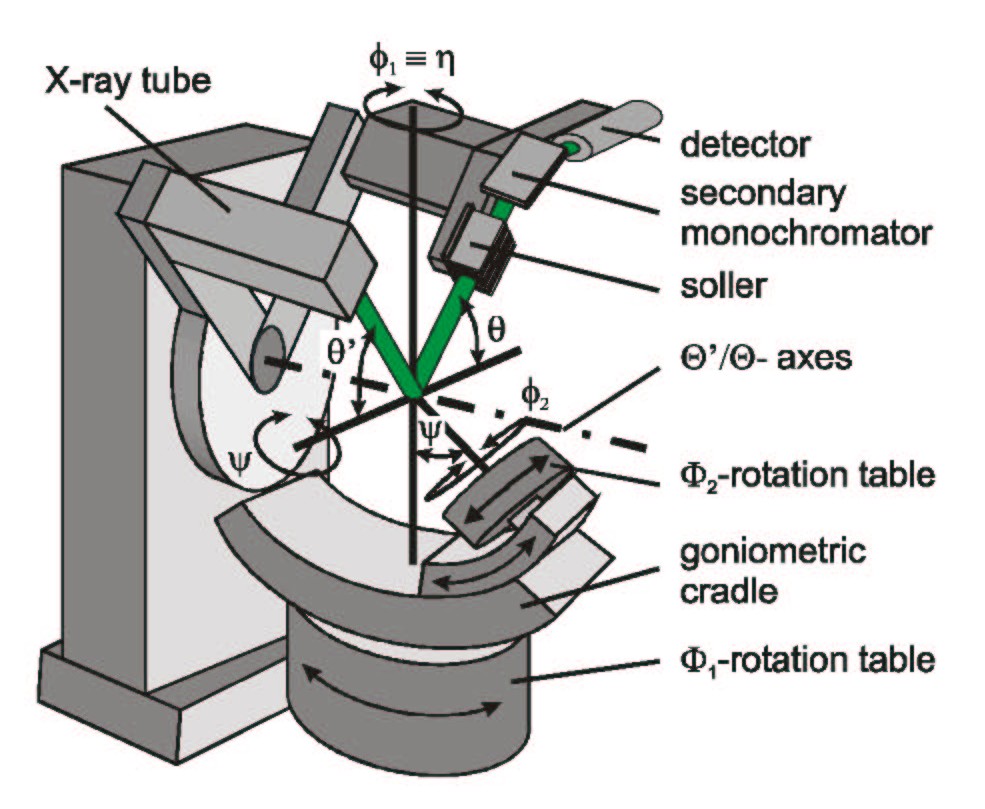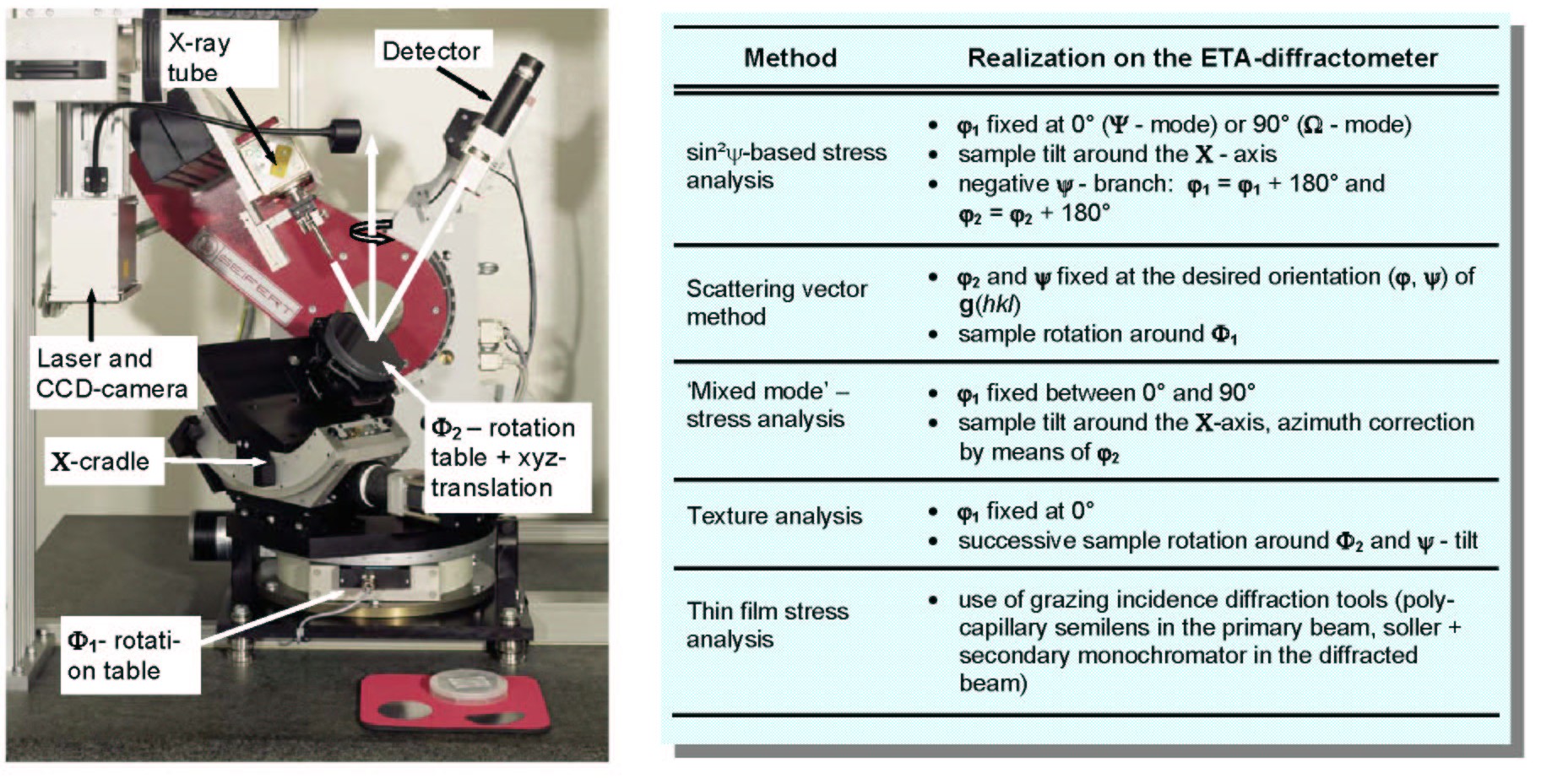Department Microstructure and Residual Stress Analysis
ETA-Diffractometer
The figure below shows a schematic view of the diffractometer. It operates on the principle of the SEIFERT theta-theta-diffractometer MZ VI. In its basic configuration, the sample is aligned in a horizontal position, whereas both, the X-ray tube and the detector can be rotated in the vertical diffraction plane. Thus, working in this mode corresponds to the conventional omega-geometry as defined in the XSA. All sample rotations are based on a second 1-circle-goniometer which operates in the horizontal plane, i.e. its axis phi1 and the theta’/theta-axes are perpendicular to each other. The angle psi between the surface normal and g(hkl) is adjusted by means of an Eulerian cradle segment operating in an angular range between 0 and 90°, which is placed on the phi1-goniometer in such a way, that the psi- and the phi1-axis enclose an angle of 90°.
A rotation around phi1 exactly corresponds to the sample rotation around the scattering vector g(hkl) which is inclined by the angle psi against the surface normal. The azimuth phi of g(hkl) with respect to the sample system is adjusted by a rotation table phi2 inside the Eulerian cradle segment. From a generalised point of view, the ETA-diffractometer is a 5-circle diffractometer, which differs from a conventional 4-circle Eulerian cradle by the additional axis phi1 for the rotation of the cradle (segment) perpendicular to the θ’/θ-axes. This phi1-axis, however, is the necessary additional degree of freedom, which is needed for the direct realisation of the eta-rotation. For thin film stress analysis at grazing incidence, a variety of optical elements like soller slits and primary or secondary monochromators can be placed into both, the incident and the diffracted beam, respectively. The sample positioning is performed by means of x-, y- and z-translation tables and will be controlled by a system consisting of a laser and a CCD-camera which are focused on the centre of the diffractometer defined by the intersection of all rotation axes.
The photograph below shows the ETA-diffractometer setup in our lab. The table aside gives an overview of all common diffraction methods realized on the ETA-diffractometer.


